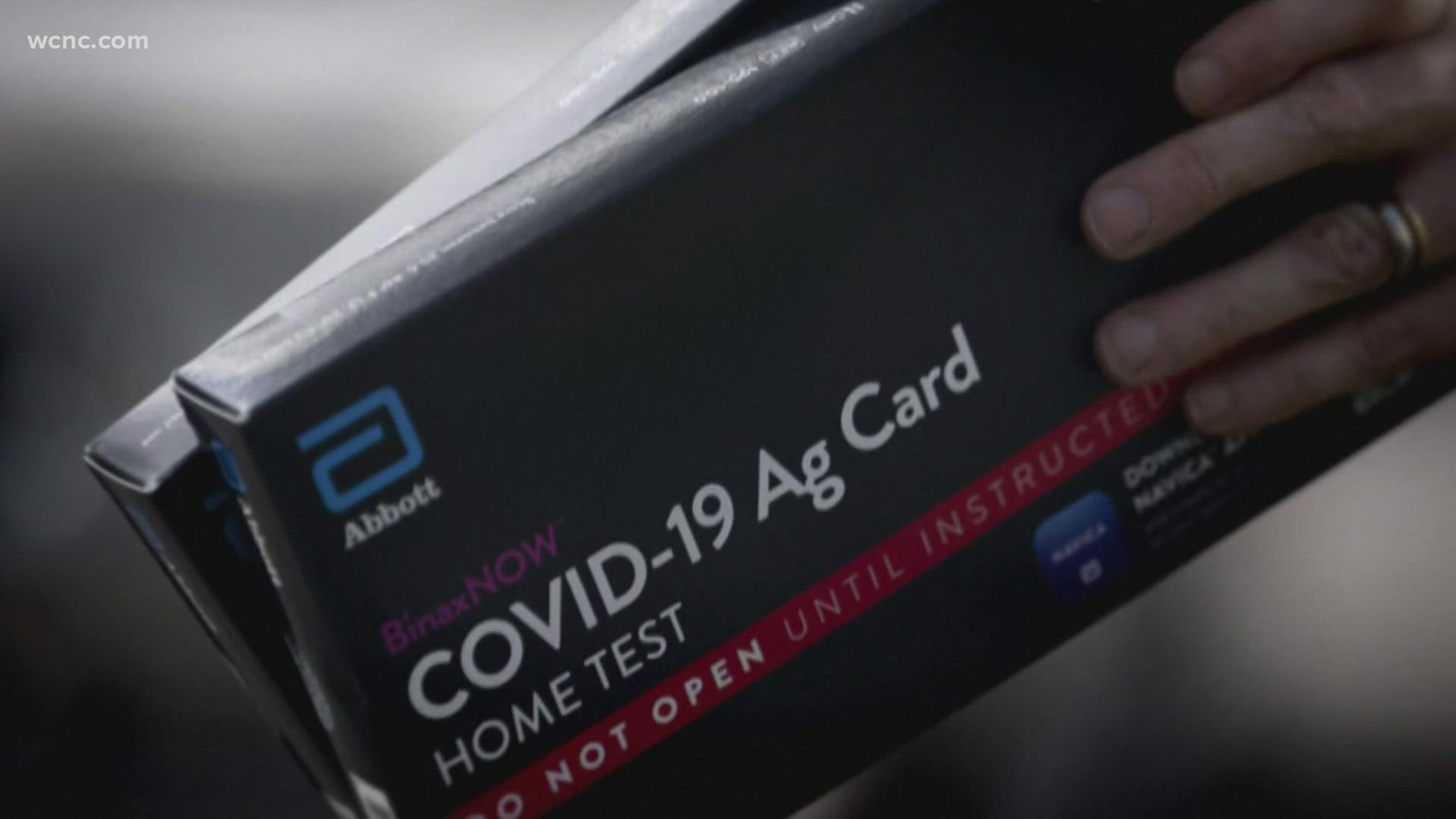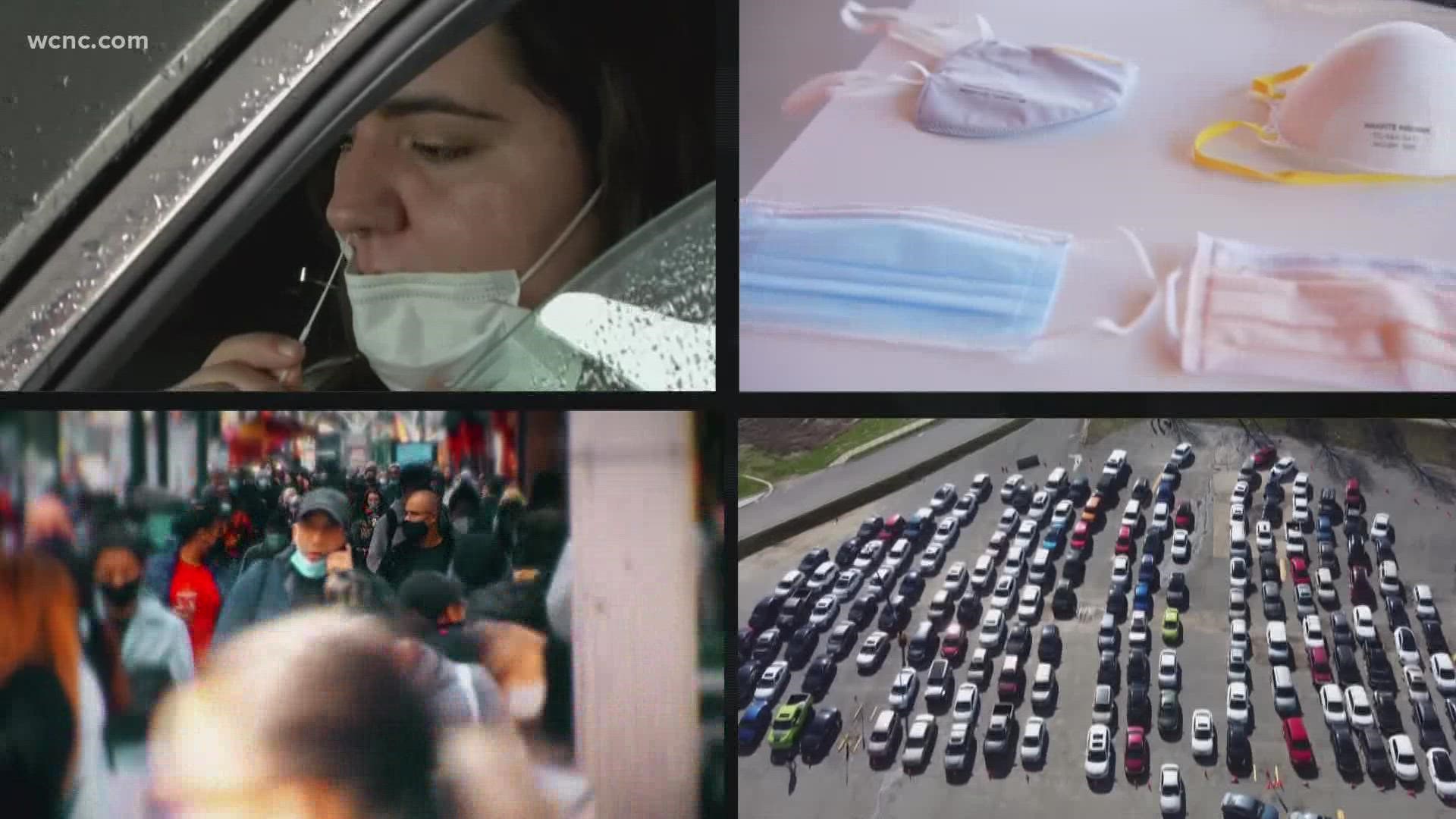CHARLOTTE, N.C. — Hundreds of millions of at-home COVID-19 tests were just made available to Americans just when many people need them. But, with so many relying on those home tests, there’s concern state data on COVID-19 cases is not as accurate as it could be.
If someone is tested at a site run by the state, a hospital system or county health department, the results are sent to the state. That helps health leaders get a grasp on how much of the virus is spreading in the community and to shape policies accordingly. But when someone uses an at-home test kit, the results are not reported anywhere.
COVID-19 metrics continue to hit new levels, but experts believe the bigger picture may look different.
“The results we have from testing is probably the tip of the iceberg for the actual cases that are out there,” Dr. David Priest with Novant Health said.
With lines at COVID-19 testing sites stretching for miles and results taking longer than usual to get back to patients, at-home tests have been flying off pharmacy shelves. The Mecklenburg County Health Department gave out 35,000 in just a few hours. Doctors say the tests are certainly useful but come with some challenges.
“You have to carefully do the swab as they direct you to, and so there is some potential variation in the user, who maybe isn’t familiar with using those kinds of tests all the time, that can affect results,” Priest said.
He also said current antigen tests, like the at-home kits, are not as good at picking up on the omicron variant. Those tests are more likely to give a false negative, which can lead to the further spread of the virus.
“If you’re somebody that has symptoms consistent with COVID, and you decide to do a rapid home test, and it’s negative, I’d still assume you have COVID and consider repeating the test a day or two later,” he said.
But the biggest reason the data may be off is that there’s no way to report at-home results to the state.
“I believe we’re actually way undercounting because we have individuals who are doing thousands of home tests, some of which are positive, and they’re staying home but the state doesn’t have any record of that and has no way of getting that data, knowing about those cases,” Priest said.
Another reason the data may be off is that some people haven’t had easy access to testing and are choosing to isolate themselves at home because getting a test has been so difficult.


